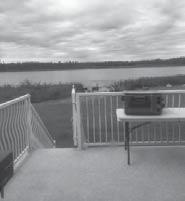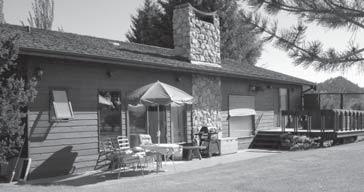

Museum gets section of historic wooden pipe
Frank PEEBLES Citizen staff fpeebles@pgcitizen.ca
The Exploration Place has always been Prince George’s pipeline to the past, but now the City of Prince George has passed them some historic pipeline.
One of the reasons the new housing development beside city hall ran into months of delays was the old infrastructure that got uncovered during the dig. One of the most surprising discoveries was the presence of wooden water pipes, also known as staves, that once serviced the homes and businesses of George Street back at the beginning of the 20th century. Some of that piping was in remarkably good condition today.
It was only an arm’s length of it, but city staff felt The Exploration Place should have a section of this piping as an artifact telling a little story of our municipal infrastructure history.
The pipe is a circular column composed of wood sliced at angles and fitted together with tongue-in-groove joints. Imagine a long, straight wine barrel wrapped in thick wire. The joints were slightly loose to the touch.
“The water would expand the wood and tighten the joints,” said Exploration Place curator Alyssa Tobin-Leier.
The general properties and usage of these wooden utility pipes were already known at The Exploration Place. Someone had donated a smaller section that had been used to connect a house to the city’s larger wooden watermains. The homeowner’s piece was eight inches in diameter while the piece donated by the city was 10 inches.
“Someone donated a sample to us when they found it on their property on Johnson Street,” Robin-Leier said. “It was about one and a half metres (approximately five feet) below the ground’s surface.”
The two segments are now stored in the same artifact locker inside the museum’s repository.
The two pieces seem to be constructed of fir and show little signs of rot. What decay exists could have developed post-use. It was not, therefore, a shortsighted idea to use wood as buried water vessels. Tobin-Leier even found a historical photo from this region showing outflow pipes several feet in diameter in what might be a dam construction project.
“The stave we just got from the city probably dates back to the 1910s,” said TobinLeier.
“That is when there was a water tower constructed on Connaught Hill to gravityfeed water to the town site down below, and these pipes would likely have been connected to that. They tore the water tower down in 1958, so that’s when the stave system would have gone into disuse. When

the city crews were digging for the new housing complex, they found clay and metal pipes as well, all of them old, and there was no reliable map of the underground infrastructure back then, so they were coming across this system basically by accident as they worked.”
In the Jan. 30, 1915 edition of the Prince George Post newspaper, it was written that a Col. Thompson assessed the sewage, water and lighting systems of the upstart town. Thompson’s report stipulated that there was 700 feet of 10-inch pipe on Quebec Street.
A total of 3,812 feet of eight-inch pipe ran along Third Avenue between Brunswick and George Streets plus along George Street from First Avenue to the standpipe on Connaught Hill.
A total of 1,980 feet of six-inch pipe ran along segments of Patricia Boulevard; Que-
bec, Brunswick and Ontario Streets; and Third, Fourth and Fifth Avenues.
It was in aid of commercial and residential water supply, and also firefighting. The cost of the pipes, valves, crosses, plugs, nine hydrants and an engine, connections, tanks and other associated stuff amounted to $47,800. That amount was calculated on the estimated price of steel pipe, plus its shipping, plus installation at seven feet of depth, based on case studies in Calgary and Edmonton.
There was a necessity to use a system of three-inch pipes to service residents but that, said the report, would offer “practically no fire protection” and should be “of a purely temporary nature.”
The report indicated factors like proximity to railroad, runoff from nearby hills, proximity to sawmills, the presence of a
former river channel, and the array of existing wells as part of planning that should be considered for future expansion of the water utility system.
“For a long time to come the standpipe on Connaught Hill will serve for Prince George, South Fort George and all intervening country,” said Thompson’s report, as published by The Post. “If a large population should settle in Fort George near or west of Central Avenue, in order to balance circulation, a second standpipe, holding water at the same elevation as the one on Connaught Hill will have to be erected, probably near the intersection of Winchester and Seventh Avenue.”
As another option, the one favoured by Thompson, the municipality was also advised to secure freshwater sources near the river “at points close to the railroad.”
Transfers to be scrapped under revamped bus fare schedule
Mark NIELSEN Citizen staff
mnielsen@pgcitizen.ca
A revamped transit fare schedule that will do away with transfers while also encouraging users to purchase passes that give them an unlimited amount of rides for the day will come into force in September. The changes include increasing the fares students and seniors will pay for cash fares and 10-ticket books to the same levels adults pay, translating into increases of 50 cents and $4.50 respectively. But a DayPASS, which allows a rider to use the bus through an entire calendar day, will drop to $5, a decline of 25 cents for students and seniors and $1.25 for adults. And in the process, transfers will be eliminated. They provide a 90-minute window for a one-way trip that requires more than one bus but are often abused with riders using them to make round trips. Transfers are the “number one cause of conflict between operators and the public as well as a means for fare fraud through the use of expired transfers,” BC Transit manager of sales and revenue Ryan Dennis told city council during a presentation on Monday night.


Dennis said the same program is now in place in Victoria and Nanaimo and added ridership has increased in both communities as a result. He attributed the rise to two reasons – the convenience of the DayPASS, which can be purchased onboard a bus, and “greater use of monthly passes as those become more affordable relative to frequent purchases of the DayPASS.”
The cost of monthly passes will rise. Adults will pay $60, up $2.50 and students and seniors will be charged $50, a $2 increase.
Also, student semester passes will rise by $10 to $135. BC Transit had been pushing for a $160 student semester pass, but city council’s finance and audit committee turned down the proposal.
A ProPASS, purchased by employees through payroll deduc-
tions, will cost $51.50 per month, up $2.15. And registered handyDART users will pay $2.50 per cash fare ride, up 25 cents. That did not sit well with Coun. Murry Krause, who noted many seniors and people with disabilities are on fixed incomes and rely on transit to get to medical appointments.
In response, BC Transit government relations manager
Rob Ringma said he is close to completing a report that he will forward to city staff on improvements to the HandyDART service that will help justify the increase.
BC Transit is also in the process of outfitting buses with technology that will allow customers to use their phones and computers to determine if a bus is on time or behind schedule. The technology should be in place by this fall, council was told.
“If you see that your bus is five minutes late, that’s five minutes extra that you can spend indoors, warm,” Ringma said.
Also, weekend adult passengers using a prepaid fare type such as a DayPASS, will be able to bring along up to four children, up from the current two.
As it stands, 29 per cent of the system’s cost is recovered through the users, two percentage points below the average for tier one systems provincewide “and is projected to continue to decrease towards 30 per cent if we maintain the current fare structure,” city transit planner Champa Maduranayagam told council.
Based on the experiences in Victoria and Nanaimo, revenue from the changes is expected to rise by six per cent, or $107,763 and ridership is projected to go up three per cent or 49,298 rides.

The Exploration Place curator Alyssa Tobin-Leier looks through a section of the wooden water pipe that crews excavated from the area around city hall. The city has donated sections of the pipe to the museum to be preserved.
CITIZEN PHOTO BY BRENT BRAATEN
Transit bus stop at Pine Centre Mall. The city is changing fares for the transit system.

Snow science
Julian Kallis, 10, uses a pH strip to check the acidity of snow that was collected by The Exploration Place on Tuesday afternoon. He was one of the children in The Exploration Place spring break camp, Junior Biology Lab. Kids in the camp are learning about all things organic. They are able to explore the science of animals, plants, the human body, and the ecosystem.
Marriott contractor demands retraction from NRCA
Mark NIELSEN Citizen staff mnielsen@pgcitizen.ca
A lawyer representing the general contractor hired to guide the Marriott Courtyard hotel project to completion is demanding that the Northern Regional Construction Association retract statements alleging his client left local trades and suppliers in the lurch.
In a March 25 letter to the association, lawyer David Mckenzie says statements about Calgary-based UPA Construction Group Ltd. that NRCA CEO Scott Bone made in a memorandum to its members and to local news media are “false, misleading and disparaging with an intent to injure.” Mckenzie takes issue with claims in the memorandum that UPA owed subcontractors $1.8 million, that it has delayed responding to the NRCA on the matter and that UPA’s actions have been “un-
ethical, contravenes contract conditions and illustrates a lack of good faith.”
Contrary to those statements, McKenzie says $1.8 million was not due and owing. He says the project was behind schedule and the Marriott Courtyard owner advanced a “substantial claim for delay damages” against UPA as a result.
In turn, Mckenzie says UPA sought to have the amounts deducted from those it deemed to responsible in accordance with the law.
Mckenzie says UPA “spent considerable time and effort” between August and November 2018 reaching negotiated settlements with the hotel’s owner and the majority of UPA’s trades and suppliers whose claims exceeded a combined total of $1.6 million.
As a result, he says the “vast majority” of the claims have been resolved with all but one of the parties represented by legal counsel in the negotiations.
Mckenzie is also demanding the NRCA call off a boycott of the Marriott Courtyard over the matter.
“The published statements in the Memorandum and the statements to the media are false, have lowered UPA’s reputation, and are defamatory as a result,” Mckenzie says.
“It is clear that the statements were published with malicious intent to cause financial harm to UPA. Indeed, UPA has suffered reputational and financial harm as a result.
“I hereby demand that you immediately publish a complete retraction of the Memorandum, issue an apology to UPA and Prince George Hotel Limited Partnership and end the boycott of the Marriott Courtyard.”
Bone did not return an invitation to comment on Tuesday.
The full letter is posted with this story at www.pgcitizen.ca.
Student housing project advanced to final reading
Citizen staff
A rezoning application for a plan to build a student housing complex downtown was advanced to final reading on Monday night.
To be located at 1404 Patricia Blvd., next to the Marriott Courtyard and across from the Prince George Public Library, it will consist of about 200
It’s a proven concept. We have 565 units that we have developed so far in B.C. – high demand, all self contained.
— Tim McLennan
“micro-units” of purpose-built rental housing with an onsite operator and under a zone drafted specifically for the site.
“It’s a proven concept,” architect Tim McLennan of Kelowna-based Faction Projects Inc. told city council during a brief public hearing on matter.
“We have 565 units that we have developed so far in B.C. – high demand, all self contained.”
There are two bus stops nearby, “but we’re discussing with staff creation of an express line that goes to both CNC and UNBC,” McLennan said.
The project drew accolades from councillors. Coun. Cori Ramsay, a UNBC graduate, said offcampus student housing has been “talked about and dreamed about for a very long time,” and Coun. Kyle Sampson predicted those who choose to live there will breathe some more life into the downtown core.
Mayor Lyn Hall said student housing is one of the “major bricks” to develop the downtown as is the Park House condominium project.
“It’s a real gem,” he added.
MAKING IT RIGHT
Contrary to a story in Tuesday’s Citizen, workers at the Polar sawmill in Bear Lake voted against ratifying the latest contract offer. The Citizen regrets the error.




continue.
Trump border emergency survives as House veto override fails
WASHINGTON — The Democratic-led House failed Tuesday to override U.S. President Donald Trump’s first veto, salvaging his effort to steer billions of extra dollars to erecting border barriers and delivering a victory to the White House in a constitutional and political clash that’s raged for months.
Lawmakers voted 248-181 to overturn Trump’s veto, but that fell 38 votes shy of the required two-thirds margin. Just days after Attorney General William Barr announced that special counsel Robert Mueller had found Trump didn’t scheme with Russia to help his 2016 election, Tuesday’s vote bolstered Trump’s drive to build a wall along the boundary with Mexico, a hallmark of his 2016 presidential campaign and a priority of his presidency.
“Thank you to the House Republicans for sticking together and the BIG WIN today on the Border,” Trump tweeted. “Today’s vote simply reaffirms Congressional Democrats are the party of Open Borders, Drugs and Crime!”
While clearly a defeat for Democrats, the vote afforded them a chance to reemphasize policy differences with Trump and change the subject from collusion allegations that have lost political clout. Underscoring that, House Speaker Nancy Pelosi placed her name atop a House Democratic fundraising email referencing the failed veto override, writing, “I know grassroots Democrats won’t let Trump’s enablers get away with this.”
Just 14 Republicans joined all voting Democrats in Tuesday’s futile effort to void Trump’s declaration of a national emergency at the Southwest border.
By invoking that power, Trump has said he will shift $3.6 billion from military construction to erecting barriers along that boundary. Congress has voted to
provide less than $1.4 billion for border barriers, leaving Democrats and some Republicans fuming that Trump is abusing his powers by ignoring Congress’ constitutional control over spending.
Despite his veto remaining intact, Trump may not be able to spend the money for barriers quickly because of lawsuits by Democratic state attorneys general and others that could take years to resolve.
Trump insisted during his campaign that Mexico, not taxpayers, would pay for the wall. To keep the issue alive into the 2020 campaign season, House Democrats may force fresh votes on the emergency declaration in six months, as the law allows.
The Pentagon sent lawmakers a list last week of hundreds of military construction projects that might be cut to pay for barrier work. Though the list was tentative, Democrats say that by backing Trump, GOP lawmakers were endangering local bases to pay for the wall.
Unhappiness over Trump’s plan to siphon the money from the military has become a bipartisan concern. On top of the $3.6 billion from construction, the Pentagon has informed Congress that it wants to steer another $1 billion from personnel accounts to border barriers.
At a House Armed Services Committee hearing Tuesday, panel Chairman Adam Smith, D-Wash., said it was wrong to use the Pentagon as “sort of a piggybankslash-slush fund.” The committee’s top Republican, Mac Thornberry of Texas, also said he opposes redirecting defence funds.
Acting Defence Secretary Patrick Shanahan told the lawmakers that while his department could pay a future price for manoeuvring around Congress, he was following a “legal order from the commander in chief.”
Congress had approved a resolution annulling the national
emergency that Trump declared at the U.S.-Mexico border in February. That included passage by the Republican-led Senate, in which 12 GOP senators – nearly one of every four – joined Democrats in blocking him.
Trump vetoed that measure almost immediately.
“We take an oath that we must honour” to protect the Constitution,” Pelosi, D-Calif., speaking on her 79th birthday, said Tuesday.
“The choice is simple, between partisanship and patriotism. Between honouring our sacred oath or hypocritically, inconsistently breaking this oath.“
Rep. Joaquin Castro, D-Texas, called Trump’s declaration “constitutional vandalism.”
Republicans said Trump was merely following a 1976 law that gives presidents emergency powers, and was trying to head off Democrats with little concern about border security.
Rep. Tom McClintock, R-Calif., said Trump was acting against the “radical left in this House that would dissolve our borders entirely if given the chance” – a stance that no Democrat has taken. Rep. Paul Mitchell, R-Mich., called the veto override effort “a partisan whack job” because of its certain defeat.
All 13 Republicans who voted with Democrats last month to oppose Trump’s declaration did the same Tuesday. They were joined by Rep. John Katko, R-N.Y., who missed the earlier roll call.
Border arrests are up since falling to a 46-year-low during Trump’s first year in office.
John P. Sanders, Customs and Border Protection’s chief operating officer, said Tuesday that the agency expected to make 100,000 arrests or denials of entry in March, about double the 50,347 during the same period last year. Nearly six in 10 are arriving as families. U.S. authorities made 4,036 border arrests Monday, the highest mark ever, Sanders said.

RCMP seeking suspicious truck
Citizen staff
Prince George RCMP issued an image Tuesday of a pickup truck resembling one connected to three suspicious incidents near local elementary schools.
It’s described as a white newer model Toyota Tundra with an extended cab and a black tonneau cover on the box.
The driver is described as a Caucasian man, 30-40 years old with short, dark hair, a short, dark beard about an inch long with flecks of grey, and a scar on his right eyebrow. He is wanted in connection with incidents on Feb. 19 and 25, both near Heritage Elementary School and on March 19 near North Tabor Boulevard and Ospika Boulevard. He is suspected of following children as they’re walking and trying to convince them to get into his vehicle. Prince George RCMP is asking anyone with information to call the Police at 250-561-3300 or Crime Stoppers at 1-800-2228477 (TIPS).
Former hostage Boyle made frantic 911 call about wife, court hears
Jim BRONSKILL Citizen news service
OTTAWA — Former Afghanistan hostage Joshua Boyle made a frantic, late-night 911 call in December 2017 to say his wife Caitlan Coleman had run screaming from their Ottawa apartment, threatening to kill herself.
An audio recording of the call, which resulted in a prompt visit from police, was played Tuesday at Boyle’s assault trial in Ontario court.
The call triggered an investigation that led to Boyle’s arrest hours later for allegedly assaulting Coleman.
Boyle, 35, is charged with offences including assault, sexual assault, unlawful confinement and causing someone to take a noxious substance.
A majority of the charges relate to Coleman, though a second alleged victim cannot be identified due to a publication ban.
Boyle has pleaded not guilty to all charges.
At the time of his arrest, the couple had lived in Ottawa for just over two months after five years in captivity overseas.
Boyle and Coleman were seized in 2012 by a Talibanlinked group while on a backpacking trip in Afghanistan. Pakistani forces freed them in October 2017 along with their three children, who were born during the lengthy hostage ordeal.
Boyle told the 911 operator he and Coleman were arguing when she became very agitated. He asked her to stay in her room because she was upsetting the children. She then ran outside, “screaming at the top of her lungs that she’s going to kill herself,” he said.
Ottawa police Sgt. Shane Henderson told the court he and another officer arrived at the apartment shortly after midnight and tried to find Coleman.
Henderson said Boyle told him his wife was upset because her mother, Lynn, was in town from Pennsylvania, and Coleman was unhappy the apartment needed cleaning.
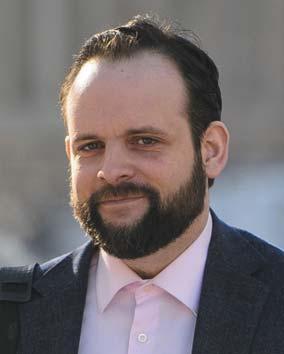
According to Henderson, Boyle said he let Coleman leave, even though he was unsure she had a jacket or shoes, because he didn’t want to hit her or drag her back into the apartment.
Henderson soon set off for Lynn Coleman’s downtown hotel. As he arrived, Boyle called to say he believed his wife had taken her passport and those of the children, leading him to fear she might abduct them. At the hotel, Henderson found Coleman in her mother’s room. Henderson expressed concern for Coleman, but she told the officer she was not suicidal. Coleman provided a detailed statement saying she was trying to get away from her husband because he had threatened to kill her and had assaulted her “numerous times,” Henderson said.
She said Boyle had broken one of her bones in Afghanistan, the officer added.
As a result, Henderson said, the focus of the investigation shifted from a missing-person case to a criminal probe. Henderson and fellow officers returned to the apartment in the early hours of Dec. 31 to take Boyle into custody.
As Henderson described the arrest, Boyle became visibly upset and tried to leave the courtroom, prompting a short break.
During cross-examination, Boyle’s lawyer, Lawrence Greenspon, pressed Henderson on exactly when and why he began to see the investigation as a probe of Boyle’s purported actions.


RCMP HANDOUT PHOTO Police are looking for a newer-model, white Toyota Tundra with an extended cab and black tonneau cover.
Alan FRAM Citizen news service
CITIZEN NEWS SERVICE
Construction crews replace a section of the wall separating San Diego, above right, and Tijuana, Mexico, below left, on March 11. The U.S. House of Representatives failed to override President Donald Trump’s veto, allowing the state of emergency at the U.S.-Mexico border to
BOYLE
MPs denounce leaked reports
Teresa WRIGHT Citizen news service
OTTAWA — Leaked reports about a dispute between Prime Minister Justin Trudeau and former attorney general Jody Wilson-Raybould over a Supreme Court appointment drew condemnation from bar associations and MPs of all parties Tuesday as the controversy surrounding the SNCLavalin affair raged on.
Opposition MPs called the leaks an act of desperation meant to smear WilsonRaybould and to justify Trudeau’s decision to move her out of the prestigious justice portfolio in January – a cabinet shuffle that touched off what’s become a full-blown political crisis for the governing Liberals.
And even a Liberal MP called the leaks “outrageous.”
Canadian Bar Association president Ray Adlington said breaching the confidentiality of the judicial selection process “demeans the selection process and ultimately all those who hold the office of judge.”
The Canadian Press and CTV reported Monday that in 2017 Trudeau turned down Wilson-Raybould’s recommendation that Glenn Joyal be elevated from chief justice of Manitoba’s Court of Queen’s Bench to chief justice of the Supreme Court.
Sources, who were not authorized to comment publicly on the normally confidential judicial selection process, said Trudeau was concerned about Joyal’s conservative, restrictive approach to the Charter of Rights and Freedoms.
Shortly after Trudeau told Wilson-Raybould he did not support her choice, the sources said Joyal withdrew his name from consideration. Trudeau later appointed Sheila Martin to the high court and named sitting Justice Richard Wagner as chief justice.
The dispute over Joyal suggested Trudeau may have had reasons unrelated to the SNC-Lavalin affair for moving WilsonRaybould out of Justice. She has said she believes she was shuffled to Veterans Affairs as punishment for refusing to intervene to stop the criminal prosecution of the Montreal engineering giant on corruption charges related to contracts in Libya.
On Tuesday, Trudeau refused to discuss the matter or say whether his office was involved in the leak of information to the media.
Mark Toews, president of the Manitoba Bar Association, said it’s “appalling” the reports implied that Joyal’s conservative views on the charter could result in him giving rulings “that would undermine the rights of women and the LGBTQ2S community.”
“Such a suggestion is entirely improper and indeed false... Nothing in what he has done throughout his judicial career, nor in publicized comments he has made, could suggest that he is against a woman’s right to choose, same-sex marriage or LGBTQ2S

rights generally.”
MPs on the House of Commons ethics committee also denounced the leak as a breach of the highly confidential judicial appointment process.
Conservative MP Peter Kent called it a “disgusting act of desperation” that he charged could only have come from someone either currently or formerly working in the Prime Minister’s Office. He suggested the leak could warrant a separate parliamentary investigation.
“(It was) a leak of highly sensitive, confidential information smearing a highly respected member of the judiciary in an attempt to distract from the prime minister’s attempted interference in a criminal trial and a coverup of that attempted interference,” Kent said.
“This breach of the confidentiality of what is supposed to be a highly confidential judicial appointment process is serious enough to require an investigation on its own.”
Even members of the Liberal caucus were upset by the disclosure, with Liberal MP Nathaniel Erskine-Smith calling it “outrageous.”
“Without question, that kind of leak undermines the confidence in the judicial selection process and appointment process and I think people from all parties ought to condemn that kind of thing. Completely inappropriate,” he said.
NDP Leader Jagmeet Singh said he felt the leak was an attempt by the Trudeau government to change the channel and shut
Drug users being targeted for eviction under B.C. rules, study says
Camille BAINS Citizen news service
VANCOUVER — British Columbia’s housing policies are allowing landlords to evict drug users in Vancouver’s rooming houses and there’s little or no recourse for people to defend themselves against a practice that is often illegal and creates a risk of overdose, a new study says.
The study by the BC Centre on Substance Use says low-income tenants living in private and non-profit single-room occupancy units in the Downtown Eastside are targeted specifically for their drug use and often evicted without notice or they are given just a verbal notice.
Research scientist Ryan McNeil, one of six authors of the study, said dispute resolution measures under the Residential Tenancy Act can be inaccessible, especially for people who have become homeless and can’t file their paperwork in a timely manner.
Evictions leading to homelessness can also mean people lose touch with their trusted drug dealer, often leading to a change in patterns that involves more use of the highly addictive stimulant crystal meth or injecting while they’re dope sick, McNeil said.
“People’s lives are thrown into chaos. All of the routines, the patterns that people establish to negotiate using drugs under criminalization to make money to support themselves or just live their day-to-day lives, are just thrown out the window.”
The study involving 50 people living in Vancouver’s Downtown Eastside was published Tuesday in the International Journal of Drug Policy and completed after a year of data collection that ended in 2016, when the province declared a public health emergency after a sharp spike in overdose deaths.
“We were doing this work right as the crisis was hitting Vancouver and one of the saddest moments was realizing that we weren’t finding people for follow-up interviews because they had died. And if that doesn’t lay out the life and death stakes of evictions, I don’t know what does,” McNeil said. “One of the challenges that we encountered with this study is just understanding the scope of evictions in the Downtown Eastside. The reality is that these aren’t documented anywhere and that’s incredibly concerning.” Vancouver’s bylaws define so-called single-room occupancy units as hotels or rooming houses with less than about 320
We were doing this work right as the crisis was hitting Vancouver and one of the saddest moments was realizing that we weren’t finding people for followup interviews because they had died.
— Ryan McNeil
square feet that typically include shared bathrooms and come without full kitchens.
The units are considered necessary affordable housing for people who would otherwise be on the street but deplorable conditions in some hotels make them unlivable.
The study says noise complaints and breaches of building policies were among the most commonly cited reasons for eviction but enforcement was prejudicial against drug users and building policies, such as those involving curfews, were not typical in other types of rental housing.
The study cites the story of a 54-year-old transgender woman who tried to comply with unfair rules regarding her belongings after she had moved from a larger apartment and tried to keep her things organized but was still evicted.
“The manager said I had to go to (a shelter) while she threw my things away.”
DJ Larkin, an experienced housing rights lawyer who was an adviser on the study, said landlords have all the power so the law must be changed to provide some rights to people who face prejudice simply because they are poor and use drugs.
“The power imbalance is one of the fundamental reasons why provincial reform is necessary and I also think it’s an answer to people who say ‘Why should landlords have to have someone who they don’t like as a tenant?’ None of that is relevant to whether or not there should be adequate protections in place to protect the rule of law and protect fairness,” she said.
Jean Swanson, a Vancouver councillor and former longtime anti-poverty and tenants’ activist in the Downtown Eastside, said most people living in the neighbourhood don’t know their tenancy rights.
down the ongoing controversy dogging the PMO in light of Wilson-Raybould’s allegations of political interference in the criminal prosecution of SNC-Lavalin.
Accusations of a coverup orchestrated by the Prime Minister’s Office were once again on the lips of opposition parties Tuesday after they failed to convince the Liberals to let the ethics committee probe further into the controversy.
The Liberal majority on the committee voted down a motion backed by Conservatives and New Democrats that would have seen Wilson-Raybould and former Treasury Board president Jane Philpott testify about the controversy.
Philpott resigned from cabinet earlier this month in solidarity with Wilson-Raybould, saying she no longer had confidence in the government’s handling of the SNC-Lavalin case.
“The coverup continues,” Conservative MP Pierre Poilievre said.
“The prime minister clearly has something to hide, his story keeps changing, Conservatives will not stop until we get to the truth.”
The justice committee last week shut down its investigation into the affair, with Liberal members saying they were satisfied no rules or laws were broken.
In nearly four hours of testimony before the justice committee, Wilson-Raybould last month accused Trudeau, his senior advisers, the top public servant and Finance officials of inappropriately pressuring her
last fall to overrule a decision by the director of public prosecutions not to negotiate a remediation agreement with SNC-Lavalin. Such an agreement would have forced the company to pay stiff restitution while avoiding the risk of a criminal conviction that could cripple it financially.
Trudeau has denied anything improper occurred but has been unable to change the channel from the saga that has badly hurt his public image.
During an almost two-hour-long meeting Tuesday, Conservatives and New Democrats urged their Liberal colleagues on the ethics committee to put partisan issues aside and agree to launch an investigation into the affair.
Erskine-Smith, who voted in favour of an NDP motion in February to hold a public inquiry into the matter, said a new probe may only result in going over the same ground covered by the justice committee unless the two former cabinet ministers are granted a complete waiver from cabinet confidentiality to testify.
Wilson-Raybould intends to provide more details of her allegations in a written submission to the justice committee. And the ethics commissioner is currently conducting a separate investigation into her allegations.
Erskine-Smith said if the information that comes forward from these processes do not fully deal with the matter, that might be a more appropriate time for the ethics committee to step in.

Farmers caught in Chinese canola feud
Aleksandra SAGAN Citizen news service
Canadian farmers are facing an uncertain future after China escalated its feud over canola on Tuesday.
“There is a lot of confusion amongst farmers about what is able to be exported,” said David Quist, executive director of the Western Canadian Wheat Growers. China blocked canola shipments from a second Canada-based producer on Tuesday over alleged contamination issues.
A statement on China’s General Administration of Customs website said officials detected several hazardous organisms in canola shipments from Regina-based Viterra Inc. Viterra, which is part of Glencore Agriculture, did not immediately respond to a request for comment.
Winnipeg-based Richardson International Ltd. had its export permit revoked in March due to hazardous organisms allegedly found in the company’s product.
Since then, the Canola Council of Canada said all of its members have reported that Chinese importers are unwilling to purchase their products.
The result is uncertainty at the cusp of planting season, which begins in mid- to late-April for many farmers.
Quist said farmers have a lot of questions: “Therefore, a lot of people are saying: ‘What should I be planting? What should I be putting in the ground? Is there going to be a market for my product by the end of harvest season when it’s coming off the field?”
The canola council echoed that concern.
“When China injects uncertainty, it makes growers question whether they should grow food for Chinese people, said Brian Innes, vice-president of public affairs with the council.
Canadian producers will make decisions that are best for their farm, he said.
One canola farmer, David Reid, told The Canadian Press late last week that the reports of a purchasing block by China on Canadian canola will make him think about other options.
“We don’t want to grow something we can’t sell,” he said, adding there aren’t many other crop options in the part of Alberta where his farm is located. Other options available to him tend to sell for less than canola traditionally has, he said. Both the wheat and canola groups called on the government to send a delegation to China to address the issue.
China – a major market for Canadian canola that accounts for about 40 per cent of Canada’s exports of canola seed, oil and meal – is the sole country to raise a technical issue with the product, said Innes. Authorities in Canada’s other export markets, including the U.S., Mexico, the European Union, India and Japan, have not raised any issues, he said.
“We’re very perplexed because we’re confident in the quality of our Canadian canola.”
But China raised a technical concern and there needs to be a technical solution, Innes added.
CP PHOTO
Prime Minister Justin Trudeau speaks with members of the Manitoba Federation of Labour in Winnipeg on Tuesday.
CP PHOTO
Canola grower David Reid carries a sack of hybrid seed canola on his farm near Cremona, Alta., on March 22.
B.C. seaplane company looking to electrify fleet
Amy SMART Citizen news service
VANCOUVER — A seaplane company in British Columbia says it is partnering with an electric propulsion firm with the goal of becoming the world’s first all-electric airline.
Harbour Air operates 30,000 flights each year on 12 routes between Seattle, Vancouver, Victoria and other destinations in those areas.
It announced a partnership Tuesday with MagniX, a firm based in Washington state, to modify its commercial fleet using the company’s Magni500, a 750 horsepower electric motor.
The release says, if successful, the partnership will create the world’s first completely electric commercial seaplane fleet.
“Today marks the start of a true revolution in aviation that hasn’t happened since 1939 when the jet engine was introduced. We’re really in the new age of aviation where we’re starting an electrification of industry,” MagniX CEO Roei Ganzarski said in an interview.
The company developed a prototype engine about 18 months ago and has tested it on the ground with propellers but not yet in an aircraft, he said.
The first aircraft to be converted will be a DHC-2 de Havilland Beaver, a six passenger plane, and the companies expect to conduct the first test flight late this year.
The technology will need approval from Transport Canada and the Federal Aviation Administration in the United States, so the companies said their electric planes won’t take off until 2022 at the earliest.
“We expect the next two years to be going through those multiple gates and proving rounds with the regulatory authorities to ensure that when this does become commercially viable and certified, that it is as safe and reliable, if not more so, than the aircraft flying today,” he said.
No one from Transport Canada was immediately available for comment.
Technology hasn’t advanced enough to make electric planes a possibility for longhaul flights because the batteries required would be too heavy, so that’s what makes

Harbour Air an appropriate partner, Ganzarski said.
“Most of their flights are within a 100mile range, which means that for them, today’s battery is definitely enough for practical flying,” he said.
On the whole, operating costs are 70 to 80 per cent lower than “gas guzzling” airplanes, he said, based primarily on fuel costs but also less maintenance because there are fewer moving parts involved.
But customers may see a delay in accessing those savings. Greg McDougall, founder and CEO of Harbour Air, said adding the battery to the plane will reduce the capacity for passengers, but the company believes with battery innovation, costs will go down in the longer term.
McDougall also said he’s optimistic that consumers will be comfortable with the idea of electric airplanes by the time the project takes off in three years, given advances in electric and automated cars.
Canadian troops evacuate injured French soldiers in Mali
Lee BERTHIAUME
Citizen news service
OTTAWA – Canadian peacekeepers were called upon to evacuate several wounded French soldiers in Mali earlier this month after their patrol was ambushed while hunting for militants along the border with Niger.
The previously unreported incident marks the first time the Canadians have been asked to help non-United Nations forces in Mali, where the French have been conducting counter-insurgency operations since 2014.
Canada has eight helicopters and 250 military personnel in Mali, where they have been providing emergency medical evacuations and transporting troops and equipment across a large swath of the remote African country.
The Canadians have conducted seven other medical evacuations since August, all of which involved injured UN troops and workers.
The commander of Canada’s task force in Mali said the UN and France have agreed to help each other in extreme circumstances and that his peacekeepers did their jobs by helping save lives.
“I wouldn’t want people to presume or assume that we’re supporting counter-terrorism efforts,” said Col. Travis Morehen. “But it’s really at this point about saving allied lives.”
News of the French evacuation comes as the federal government is contemplating a formal UN request to extend its peacekeeping mission in Mali, which is currently set to end at the end of July.
France has about 3,000 heavily armed soldiers in Mali and the surrounding region hunting militants linked to al-Qaida, the Islamic State and other extremist groups through what is known as Operation Barkhane.
While Operation Barkhane has been credited with keeping the numerous Islamic extremist groups in Mali off balance, it has also been accused in some corners of contributing to instability in the region. According to media reports, a French patrol was operating near Mali’s border with Niger on March 10 when they were ambushed by a vehicle packed with explosives and a group of militants on motorcycles.
Fifteen French soldiers were reportedly injured, two seriously, before the militants fled.
The Canadians first learned about the attack when a French officer at the Operation Barkhane camp in Gao called while it was still happening and indicated an emergency medical evacuation might be required, said Morehen.

from the United Nations
March 10, after their patrol was ambushed.
The French counter-terror mission operates largely independently from the UN peacekeeping mission in Mali, but Morehen says there is a good working relationship between the two.
That includes the French providing air-traffic control services to the UN around Gao, the northern Malian city that is home to several military bases, including one belonging to Barkhane and another where the Canadians are located.
The French also boast a more capable hospital than the UN, Morehen said, which is why the Canadians often end up bringing any wounded peacekeepers that they pick up in the field to the Barkhane camp.
“So our pilots go over there and make sure that we have our flying procedures correct and we have a technical arrangement with them as well for medical support,” Morehen said. “There’s lots of sharing between us, which is all blessed by our governments.”
Three Canadian helicopters were quickly deployed with approval from the UN mission commander in Bamako, Morehen said, and arrived at the scene about two hours later, at which point the
fighting was over.
Because of the distance, the two smaller Griffon escorts were redirected to a nearby town to refuel while the larger Chinook, which is configured like a flying hospital, continued back to Gao alone with the injured French soldiers.
“It does increase the risk,” he said, “but we balanced it against the need to get those wounded back to medical facilities as soon as possible.”
While he agreed that it was “the right thing to do,” Walter Dorn, an expert on peacekeeping at the Canadian Forces College in Toronto, said the evacuation nonetheless risked linking the UN and French missions in some minds.
“The risk is that we are associated with Barkhane and we then become subject to more attacks and the line between peacekeepers and counter-insurgency fighters is blurred,” Dorn said.
Morehen pushed back against such suggestions, insisting the evacuation was an extremely rare circumstance and that anyone who wants to target the UN –which has suffered dozens of casualties in Mali – will do so no matter what.

NEWS IN BRIEF
Certification will require the plans to be at least as safe, if not safer, than the existing fleet, he said.
“Electric motors are extremely reliable. They don’t have the same number of moving parts as a turbine or piston engine and they have much better durability,” he said.
He said Harbour Air is North America’s largest seaplane airline and also became its first fully carbon-neutral airline in 2007.
B.C. ferry hits dock
VICTORIA (CP) — A British Columbia ferry loaded with passengers and vehicles bound for the Sunshine Coast was involved in a docking accident.
BC Ferries says in a statement no injuries to passengers or crew were reported when the Queen of Surrey hit the berth at the Langdale terminal as it was attempting to dock after arriving from Horseshoe Bay.
It says a tug was dispatched to the scene to assist the vessel.
BC Ferries says another vessel, the Queen of Cowichan, will be dispatched to the terminal to provide limited vehicle service Tuesday evening. Travellers were also being redirected to other ferry services, as well as water taxi service for foot passengers.
Transportation Minister Claire Trevena says the cause of the accident is under investigation.
“What I know is the ferry had what’s described as a hard landing and ran into the dock and they are trying to get people off the ferry,” she said. “We haven’t yet had an explanation of just why they ran into the dock.”
The Environment Ministry says in a statement it’s aware of the incident and is working with the coast guard and BC Ferries to determine if there were any environmental impacts.
The ministry says BC Ferries has reported that there were no spills as a result of the incident.
Committee tackles ride-hailing rules
VICTORIA (CP) — An all-party committee examining ride-hail-
ing regulations in British Columbia recommends few restrictions when it comes to boundaries, fares, and supplies of vehicles and drivers. But Transportation Minister Claire Trevena is applying the brakes to at least one of the committee’s recommendations when it comes to the licences drivers must hold.
The nine-member committee recommends drivers only need a Class 5 licence to operate ridehailing vehicles, but Trevena says she’s staying firm with a Class 4 requirement because it provides more safety for passengers.
Most drivers in B.C. hold a Class 5 licence, but drivers of taxis, ambulances and small buses must hold Class 4 licences.
Liberal Stephanie Cadieux, who is the deputy chairwoman of the select standing committee on Crown corporations, says she expects ride hailing won’t be available until next year. Trevena says the government introduced legislation last year that aims to pave the way for the introduction ride-hailing later this year.
Three killed in crash
SURREY (CP) — Three people have been killed in a serious single-vehicle crash in Surrey.
The RCMP said at about 10:30 a.m. on Tuesday officers responded to a report of a crash in the southern part of the city. Upon arrival, officers determined all three occupants of the vehicle were dead.
The Integrated Homicide Investigation Team has been called and will be working in partnership with the Surrey RCMP. The Mounties say the investigation is in its early stages and the cause of the crash is not yet known.

HANDOUT PHOTO VIA CP
An electric aircraft motor is tested at MagniX’s facility in Redmond, Wash. in this undated handout photo. Vancouver-based Harbour Air is looking to convert its seaplane fleet to electric power.
A Canadian Chinook helicopter takes off
base in Gao, Mali on Dec. 22, 2018. Canadian peacekeepers in Mali evacuated wounded French counter-insurgency troops on
Waste offers snapshot on drug use
The number of deaths in a year in B.C. due to drug overdoses now exceeds the combined number of motor vehicle fatalities, suicides and homicides, according to the B.C. Coroners Service.
Last year, B.C. saw 118 homicides, about 300 deaths due to vehicle accidents and about 500 suicides. The province reported 1,489 suspected illicit-drug overdose deaths in 2018.
The supply of illicit drugs is unpredictable. New shipments can arrive at any time. Although police and public-health officials can’t predict exactly when to expect overdose spikes, they always know within hours after dodgy drugs do hit the streets.
Researchers are exploring new ways around the unpredictability. The growing field of sewage epidemiology – the study of population health by way of its bowels – is one option for determining how many people in a community are taking what kinds of drugs, when and even where.
People might be reluctant to admit they use illicit drugs, but their excrement always comes clean.
Wastewater testing can supplement existing information and estimates about drug
use. If testing is frequent, it can even reveal patterns – drug-use hot spots within the community or changes in use over time.
For example, sewage says cocaine users in Oregon typically get their fixes on weekends, while meth heads score throughout the week. London appears to be a heroin hotspot, while Las Vegas residents and visitors process high quantities of methamphetamines – most of which stay behind in Vegas after many flushes, royal or not.
Another U.S. study found that use of methamphetamines, cocaine and marijuana spiked during events such as Fourth of July festivities and even the 2017 solar eclipse.
Sewage sampling can provide early warning to public-health officials as new shipments of drugs arrive in town. This can help hospitals and emergency-response, social-services and police agencies assign resources to cover those periods. The tests can also indicate when new drug labs might be coming online in a community.
Repeated testing over time can show whether naloxone programs, safe-injection sites, and other initiatives and policies work. But there’s no reason to limit monitoring to street drugs. Wastewater contains as much information about over-the-counter
and prescription drug use. Standard recommended-dose data allow the researchers to estimate how many people contributing to a sewage-collection system are taking birth control pills, antidepressants, antipsychotics, pain relievers, chemotherapy drugs, fungicides and so on.
They can do this because anything we eat that our bodies don’t metabolize and absorb flushes out the other end, and ends up – not in our waists – but in our waste.
One study measured concentrations of carbamazepine, an anti-epileptic drug, and ciprofloxacin, a common antibiotic, in rivers around the world.
It found levels of the two prescription drugs have increased significantly over the past two decades. Levels of the ciprofloxacin, in particular, have reached the point of causing ecological harm, with its potential of increasing antibacterial resistance in the environment.
Antibiotic-resistant bacteria are immune to the drugs designed to kill them. Some researchers say resistance is one of the most urgent threats to public health, as it renders medications typically given for infections and illnesses obsolete.
According to a recent southern Ontario study, antibiotic-resistant bacteria could

YOUR LETTERS
No point to sidewalk
We all know that in the past the City of Prince George has had to keep borrowing money to complete many projects that were started. Therefore it blew my mind when I received a letter from the Engineering and Public Works department in February detailing a plan to build a sidewalk in Edgewood Terrace to accommodate those in Nechako View off North Nechako Road. At a cost of over $550,000, they plan to build a sidewalk in 2020 from North Nechako Road along Churchill Drive with an aside down Stevens Drive. just to the Nechako View subdivision and no further. This will not accommodate any residents on the rest of Stevens Drive down to the river or in other parts of Edgewood Terrace. It appears that it is being built solely to accommodate those in the Nechako View subdivision. This is even more surprising because the Nechako View subdivision was intended not to connect to Edgewood Terrace through Stevens Drive. The sidewalks that we already have in the area were not cleared this winter. Furthermore, there was so much snow plowed up on Stevens Drive that there was barely enough room for cars to pass each other. The city did an excellent job of snow plowing but there just is no room to put the snowbanks.
I just ask what becomes of the sidewalks during these winter months? There would be four months during the winter when they aren’t useable and then two months of summer and this sidewalk is being built at the request of the Edgewood Elementary Parent Advisory Committee to benefit Nechako View residents.

I am suggesting that the $550,000 could be put to better use in Prince George proper where there are many places without sidewalks.
In short, I feel that this is a waste of city resources that could be put to better use elsewhere. The proposed sidewalks serve only a small subset of the neighbourhood and I question how much they would get used throughout the year.
P.S. The short sidewalk they put in last year alongside the new school parking lot was really enjoyed by the neighbourhood pets, as I witnessed last spring.
D. McFarlane, Prince George
Praise for Kodiaks
My husband and I along with another couple had the wonderful pleasure of dining at Kodiaks at CNC last Thursday evening. Excellent service, truly amazing and delicious food (five courses) and lovely atmosphere with “gentle” background music to facilitate easy conversation.
Kodiaks truly is a gem right here in our midst and we so look forward to dining there again very soon.
Rita Jewitt, Prince George
Fillier’s fine column
I would like to thank Rev. Dr. Bob Fillier of Trinity United for writing such a timely, thoughtful column in Saturday’s Citizen from both his heart and soul. And thank you to The Prince George Citizen for publishing it.
As well, I hope that you will forward this column to the Associated Press and to any other media source which could make the column available far and wide. I will do my best to forward a link for


the column to my online family, friends and acquaintances, too. May the other subscribers to The Citizen also share this piece on truly loving our neighbours, regardless of whether they are Muslims, Christians, secular humanists, agnostics, atheists or of any other persuasion – my list could be almost as long as the numbers of the Earth’s population!
Valerie Breathet, Prince George
Mount
Polley failure
Four and a half years ago, on Aug. 4, 2014, the Mount Polley gold and copper mine tailings pond failed, emptying into Polley Lake, Hazeltine Creek, Quesnel Lake and Cariboo River. A toxic cocktail of selenium, arsenic and other metals contaminated some of the most pristine waters in the world. One would think something of this magnitude would shake citizens of the B.C. Interior to the core and prompt government bodies to take immediate action to ensure this situation is remediated and that the company responsible be held accountable. That has not happened. To date, no fines have been levied and no charges laid. The statute of limitations for legal action expires this August of this year. If no action is taken, the entities responsible will not be held accountable and the risk of this type of disaster occurring elsewhere will continue because Mount Polley was considered the gold standard for environmental safety. I urge everyone to email or phone your government representatives to demand action be taken prior to August. We all need to do whatever we can to respect and protect our water.
Deb Alore, Kamloopsp

be far more widespread than we think. Researchers tested the prevalence of bacteria resistant to the antibiotic tetracycline in lakes and rivers – and found them everywhere.
River samples contained more resistant bacteria than lake samples, and rivers that flowed through farmland upstream of the sampling sites had higher levels. However, tetracycline resistance was highest in samples taken from Toronto’s wastewater treatment plant, where frequencies were two to nine times those of the highest results from rivers.
Although doctors don’t prescribe tetracycline as often as they once did, the drug continues to be used to treat acne, cholera, brucellosis, plague, malaria and syphilis. It is also widely used to treat livestock.
Widespread presence of antibiotic resistance in the environment is a concern. Bacteria promiscuously exchange genes among themselves – even among different species. Eventually, drug-resistance genes will cycle through the environment and end up back on our plates, in our water bottles, in our hospitals... and in our toilets. All the more reason to keep an eye on our own waste cycle.
— Monique Kieran,
Glacier Media
Trudeau support softening in B.C.
As Canada prepares for a federal election in the fall, the way in which British Columbians relate to the current governing party will indubitably go through some changes.
The two best results for the Liberal Party of Canada in British Columbia came in the first campaigns of two leaders named Trudeau.
Under Pierre Trudeau in 1968, the party garnered 42 per cent of the vote in the province.
His son Justin Trudeau took the Liberals to the top spot in 2015, with 35 per cent of all cast ballots in B.C.
When Pierre Trudeau campaigned again in 1972, economic setbacks made it difficult to recapture the magic of the original Trudeaumania.
The Liberals formed a minority government, and their vote total in British Columbia dropped from 42 per cent to 29 per cent, finishing third behind the New Democratic Party and the Progressive Conservatives.
The 13-point drop took the Liberals from 16 seats in British Columbia to just four in 1972.
Even as Jean Chrétien was forming massive majority governments in the 1990s and 2000s, the Liberals did not do remarkably well in British Columbia.
So, what can Justin Trudeau expect as he attempts to keep the 17 seats his party secured in British Columbia four years ago?
There have been many opportunities for disappointment among those who supported the Liberals in 2015, whether in the form of the abandoned promise of electoral reform, the policy shift on pipelines or the controversy surrounding SNC-Lavalin.
At this stage, how British Columbians feel about the current government is no longer sunny.
In the survey, 50 per cent of British Columbians agree that “a

different party would do things better in Ottawa as a government than the Liberals.”
The worrying issue for the governing party is that this group includes 25 per cent of British Columbians who voted for the Liberals in 2015.
That is, one in four of Trudeau’s voters is starting to look elsewhere.
A slightly larger proportion of British Columbians (53 per cent) also believe that a different party leader would do things better in Ottawa as prime minister than Justin Trudeau.
In this case, a third of 2015 Liberal voters (34 per cent) believe there may be better options out there for the country’s top job. Still, 38 per cent of British Columbians expect the Liberal party to form the government again after the next federal election, including 41 per cent of those aged 55 and over.
Faced with a new kind of uncertainty, and with a waning personal appeal, the way to win the next election for Trudeau is to campaign – oddly enough – like Stephen Harper did the first time he ran as an incumbent.
It is no longer about making yourself the most attractive option for voters.
It is about making all other choices less palatable.
Results are based on an online study conducted March 8–10, 2019, among 800 adults in British Columbia. The data has been statistically weighted according to Canadian census figures for age, gender and region in British Columbia. The margin of error, which measures sample variability, is plus or minus 3.5 percentage points, 19 times out of 20.
LETTERS WELCOME: The Prince George Citizen welcomes letters to the editor from our readers. Submissions should be sent by email to: letters@pgcitizen.ca. No attachments, please. They can also be faxed to 250-960-2766, or mailed to 201-1777 Third Ave., Prince George, B.C. V2L 3G7. Maximum length is 750 words and writers are limited to one submission every week. We will edit letters only to ensure clarity, good taste, for legal reasons, and occasionally for length. Although we will not include your address and telephone number in the paper, we need both for verification purposes. Unsigned or handwritten letters will not be published. The Prince George Citizen is a member of the National Newsmedia Council, which is an independent organization established to deal with acceptable journalistic practices and ethical behaviour. If you have concerns about editorial content, please contact Neil Godbout (ngodbout@pgcitizen.ca or 250-960-2759). If you are not satisfied with the response and wish to file a formal complaint, visit the web site at mediacouncil.ca or call toll-free 1-844-877-1163 for additional information.
Mailing address: 201-1777 Third Ave. Prince George, B.C. V2L 3G7
Office hours: 9 a.m. to 5 p.m., Monday to Friday
General switchboard: 250-562-2441 info@pgcitizen.ca
General news: news@pgcitizen.ca
Sports inquiries: 250-960-2764 sports@pgcitizen.ca
Classifieds advertising: 250-562-6666 cls@pgcitizen.ca
Shawn Cornell, director of advertising: 250-960-2757 scornell@pgcitizen.ca Reader sales and services: 250-562-3301 rss@pgcitizen.ca Letters to the editor: letters@pgcitizen.ca
Website: www.pgcitizen.ca
Website feedback: digital@glaciermedia.ca


BY THE NUMBERS
MARIO CANSECO
Mueller investigation a loss for Trump
NICOLE HEMMER
Anyone who had been holding out hope that the completion of the report by special counsel Robert Mueller would signal the beginning of the end of the Trump presidency has had a pretty rough 24 hours. While the full report – unreleased – may not be as friendly to the Trump administration as Attorney General William Barr’s four-page summary, Donald Trump seems to have survived Mueller’s report. For all the time and money spent on the investigation, it ultimately failed.
Or so it seemed to some Americans convinced that members of the Trump campaign and administration, right to the very top, committed crimes and impeachable offenses. But the Mueller investigation was far from a failure. It only looks that way because we are so wedded to viewing alleged political wrongdoing through the lens of Watergate.
Seen through the lens of another scandal, the Iran-Contra affair, the Mueller investigation looks very different: It produced impressive documentation of malfeasance, including numerous indictments.
In both instances, an irreproachable special prosecutor assiduously documented evidence of lawbreaking throughout a president’s inner circle, sent people to prison and left a detailed,

damning record for history. And while Ronald Reagan and his vice president George H.W. Bush escaped indictments – just as Trump seems to have escaped a finding that he obstructed justice – very few people think the Iran-Contra report vindicated Reagan.
To summarize: over the past two years, Mueller sorted through the complex story of Russian interference in the 2016 election. Not only did he conclude that a foreign power indeed interfered in the race, Mueller also secured indictments against 34 people, including six members of the Trump campaign for both financial and election-related crimes, with charges ranging from conspiracy
to obstruction to making false statements to witness tampering.
Everyone within U.S. jurisdiction, who was indicted by Mueller, has been found guilty or has pleaded guilty except for Trump campaign adviser Roger Stone, who is awaiting trial.
Compare that to the nearly seven-year investigation – 1986 to 1993 – of special counsel Lawrence Walsh into Iran-Contra, a wide-ranging criminal conspiracy perpetrated by the Reagan administration that involved millions of dollars in arms sales to Iran, a country then under an international arms embargo; in exchange, Iran released seven U.S. hostages.
A chunk of the proceeds was then
diverted to the Contra, right-wing rebels working to overthrow the Nicaraguan government. That part was illegal, too: Congress had explicitly banned any aid to the Contra rebels in laws passed between 1982 and 1985.
Yet as complex as the operation was, and as hard as those involved stonewalled and obstructed the investigation – down to destroying evidence – Walsh managed to piece together the sprawling international plot. He secured indictments against 14 people, including the secretary of defense, Caspar Weinberger; two national security advisers, Robert McFarlane and John Poindexter; and the assistant secretary of state, Elliott
Abrams, on charges including conspiracy, obstruction and perjury. Eleven of the 14 were convicted. Reagan and Bush were heavily implicated in the investigation, though Walsh opted not to indict them (in part because Bush failed to hand over evidence, and in part because Department of Justice guidelines advise that a sitting president cannot be indicted). Reagan constructed an artifice of plausible deniability. In a 1990 deposition, he said “I can’t remember” or “I don’t recall” 88 times. But Americans didn’t believe these denials – only 14 per cent said they thought Reagan knew nothing about the illegal arms deal.
We don’t know whether Trump will survive the many scandals of his administration; the U.S. Attorney for the Southern District of New York is investigating Trump’s business dealings, among other matters. It does seem likely the president will survive the Mueller report. But that’s not the best measure of a special counsel’s work. Just as Walsh exposed the corruption and lawlessness within the Reagan and Bush administrations, Mueller has demonstrated that Trump’s campaign was riddled with Russian contacts and criminality.
What Congress and, ultimately, voters decide to do with that information will determine Trump’s fate. But thanks to Mueller’s work, the historical record will reflect the foreign interference and mercenary corruption at the heart of the 2016 election.
That’s an achievement not to be dismissed lightly, even if the investigation didn’t end in the definitive fashion many on the left were expecting.
Mueller investigation a win for Trump
GUEST
COLUMN
JOE SCARBOROUGH
The Mueller War is over, and U.S. President Donald Trump won. No participation trophies will be handed out to vanquished Democrats, and any hopes of a 2020 cakewalk over the morally bankrupt president just became more distant. While Speaker Nancy Pelosi’s Democratic House majority should certainly push for the release of special counsel Robert Mueller’s full report, the headline that voters will take away from the exhaustive investigation into the president’s dealings with Russia is: “No collusion.” Democratic candidates can talk about all the indictments and charges the special counsel’s office brought against Russian nationals and Trump advisers, but most Americans will tune them out. Better now for Trump’s antagonists to focus on the stream of lies constantly spewed by the president about policies that affect Americans’ lives every day.
Trump spent his campaign for president lying about the border wall, immigration, health care, Medicare, trade, nuclear threats, terrorism, deficits, tax cuts and countless other things. But unlike his mendacity related to all things Russia, Trump’s lies about policies actually matter to Americans. Throughout 2016, candidate Trump promised to give health care coverage to all Americans. A year after that vow, Trump blasted the idea of universal health cover-

age as costly and ineffective. “No thanks!” he tweeted in February 2018.
Unlike most Republicans, Trump also promised to protect Medicare and Medicaid. He was so proud of this unorthodox stance that he once accused former Arkansas Gov. Mike Huckabee of stealing it from him. But it has been Trump who has proposed stealing billions from Medicare and Medicaid to fund future tax cuts and spikes in military spending.
Instead of cutting around the edges of these programs, Trump’s budgets have taken an axe to them. In his latest spending plan, the president proposed $845 billion in Medicare cuts over the next decade. He has also called for massive spending reductions
to Medicaid. Seniors and working-class Americans would be the ones most affected.
With the number of uninsured Americans on the rise for the first time since the passage of the Affordable Care Act, Trump’s broken promises will limit patient choices and take money from Americans’ pockets. That will be an added burden for workers already hurting from Trump’s misguided trade wars.
Trump declared that soaring trade deficits were proof that Barack Obama and his predecessors sold the United States down the river, and he promised to bring back jobs by negotiating tougher deal with foreign rivals. But two years into Trump’s presidency, the United States has its highest trade deficit
ever. It seems the reality TV host’s belief that “winning trade wars is easy” has been undermined by his own pathetic record on trade.
Who looks like the “sucker” now?
Trump also promised he would pay off the United States’ $20 trillion debt, declaring during a February 2016 debate that “we will balance our budget, and we will be dynamic again.” But, here again, Trump has lied in a most spectacular way. Republicans have a sordid record on deficits during the 21st century. George W. Bush and the GOP Congress doubled the deficit and debt over eight years, but Trump made those big-government Republicans look like cheapskates.
In February, the Trump administration broke the record for the largest monthly deficit in U.S. history. That $234 billion shortfall exceeded all yearly deficits recorded in the first two centuries of this country’s existence. Given his shameless spending record, you will not be surprised to learn that Trump’s promise to pay off the federal debt also turned out to be a lie. The national debt – now $22 trillion – is higher than it’s ever been.
And, of course, candidate Trump also promised to build a border wall that Mexico would pay for. And, of course, Mexico refused, as did Trump’s Republican Party, even when it controlled both the House and Senate.
So, yes, Democrats, Attorney General William Barr’s letter to Congress may have ruined your weekend. But if you focus on the present needs of American voters, instead of the past misdeeds of Russian actors, you just may keep this unfit commander in chief from serving another four long years. That would make the shock of this weekend a harmless, distant memory.



Flagrant foul
Nike extortion case brings basketball’s worst-kept secret into the spotlight
Citizen news service
Nike Inc. may have prevailed over lawyer Michael Avenatti’s alleged attempt to extort the company. But the case has shifted the spotlight back to an uncomfortable place for the sneaker industry: corruption and improper payments in youth basketball.
Avenatti claims to have information about Nike employees funneling money to elite high school basketball players. If that sounds familiar, it’s likely because there’s an ongoing federal probe into similar actions that continues to bring more embarrassment to college hoops. Already, the investigation has led to multiple arrests and jail sentences for three men – one a former executive at Adidas AG.
The charges against Avenatti will do little to quell broader concerns about how youth basketball operates. And the timing – just as fans celebrate the apex of the season – brings another potential distraction to a National Collegiate Athletic Association with no shortage of them.
Prosecutors issued an 11-page complaint detailing Avenatti’s repeated attempts to get Nike to pay millions to suppress allegedly damaging information. He claimed to know about Nike employees channeling money to high school players, they said. The complaint makes no judgment on the accuracy of the information Avenatti held about the world’s largest athletic brand.
On Tuesday morning, less than 24 hours after his arrest, Avenatti doubled down. In a series of tweets, he hinted at payments Nike made to the mother of Deandre Ayton, the top pick in the 2018 NBA Draft, and Bol Bol, the son of former NBA center Manute Bol and current freshman at the University of Oregon. Avenatti mentioned a Nike executive by name, and added that federal prosecutors had been “played” by Nike and its lawyers. A Nike

spokesman declined to comment.
Prosecutors say Avenatti reached out to Nike earlier this month with details from a client, identified simply as the coach of an Amateur Athletic Union, or AAU, team in California. The squad had a sponsorship agreement worth about $72,000 per year that Nike had recently decided not to renew. The Wall Street Journal identified the coach as Gary Franklin Sr., whose former players include Ayton and Bol.
Avenatti told Nike’s lawyers that his client had evidence that one or more Nike employees authorized and funded payment to the families of top high school basketball recruits, and tried to conceal the payments. The complaint says Avenatti identified three former high school players – who weren’t named – and made reference to others.
In a statement Monday, Nike said it alerted federal prosecutors when Avenatti allegedly tried to extort money from the company.
Meanwhile, it’s cooperating with a broader government investigation into NCAA basketball.
“Nike will not be extorted or hide information that is relevant to a government investigation,” the Beaverton, Ore.-based company said. “When Mr. Avenatti attempted to extort Nike over this matter, Nike, with the assistance of outside counsel at Boies Schiller Flexner, aided the investigation.”
Originally announced in September 2017, the federal probe shed light on an underground economy for youth basketball talent that had become an open secret of sorts inside the sport. Money was funneled to top recruits and their families in order to sway their decisions on which school to attend, or which shoe company to sign with as a pro. That investigation spurred debate about the outsized role that sneaker companies like Nike, Adidas and Under Armour Inc. have in shaping youth basketball. Club

teams, like those that compete in the AAU, are often sponsored by those companies and frequently play at tournaments organized by Nike or Adidas.
The sneaker giants also pay tens of millions each year to outfit colleges across the country and – further along in the ecosystem – sign pros to million-dollar endorsement deals.
In the past few weeks alone, the NCAA has been hit with a highprofile antitrust ruling, a proposed congressional legislation, and a new admissions scandal – where families were caught bribing coaches to using their admissions sway to help admit nonathletes.
Louisiana State University is playing in the Sweet 16 round of the tournament while its coach is suspended indefinitely because he’s caught up in the federal probe. Regardless of the outcome of the Nike extortion case, it’s hard for the beleaguered NCAA to see it as good news.

at 16,151.68 as increased oil prices moved the energy sector higher. The Toronto market hit an intraday high of 16,192.21. The market rose after losing almost 179 points in two trading days on fears that an inversion in the yield curve in Canada and the United States signalled a possible recession.
But the jittery couple of days marked an overplay of investor concerns in light of positive growth expectations and realization there’s a long lead time before a recession, said Craig Jerusalim, portfolio manager at CIBC Asset Management. Jerusalim said there was more negative than positive data with U.S. housing starts falling 8.7 per cent in February, building permits declining and consumer confidence waning in March. There are additional headwinds with Canada wanting to tie approval of the USMCA to the removal of aluminum and steel tariffs. There has also been a flareup of tensions between Canada and China with a second canola producer being blocked from shipping their product to the Asian country.
The market was helped by a rise in crude oil prices on supply disruptions in Venezuela and OPEC production cuts taking hold.
The May crude contract was up US$1.12 at US$59.94 per barrel and the May natural gas contract was down 2.3 cents at US$2.75 per mmBTU. That pushed the key energy sector up 1.7 per cent led by Crescent Point Energy Corp., Encana Corp and Canadian Natural Resources.
Gold moved lower with the April gold contract losing US$7.60 at US$1,315 an ounce and the May copper contract was down 0.25 of a cent at US$2.85 a pound. Still, the materials sector rose 0.9 per cent, lead by gains from First Quantum Minerals Ltd., Barrick Gold Corp and Teck Resources Ltd. The influential gold sector will lose some of its weight on the TSX if Newmont Mining Corp. is successful in acquiring Goldcorp Inc.
The Canadian dollar traded at an average of 74.70 cents US com-
CITIZEN NEWS SERVICE PHOTO
Attorney Michael Avenatti leaves court after his initial appearance in an extortion case Monday.
CITIZEN NEWS SERVICE PHOTO
An official holds a Nike game ball during an NCAA college basketball game in Columbus, Ohio, earlier this month.
Sports

Heights 5’er run
ABOVE: It was a mass start for the 115 runners who took part in the Heights 5’er on Sunday morning. The annual race is hosted by the Prince George Road Runners with 66 runners tackling the fivekilometre distance and 49 runners taking on the five-mile distance.
LEFT: Jennifer Kubas makes her way along Domano Boulevard on Sunday morning while competing five-mile distance of the Heights 5’er. Kubas finished with a time of 41:39.


Auger-Aliassime upsets Basilashvili
Citizen news service
MIAMI — Canadian teen Felix AugerAliassime knows there are expectations that come with being a breakout star in pro tennis, but he also knows it’s a burden he doesn’t have to bear alone.
Auger-Aliassime scored yet another big win by an up-and-coming Canadian star with a fourth-round upset of Nikoloz Basilashvili on Tuesday at the Miami Open. The 18-year-old from Montreal, who had to win two qualifying matches just to get into the ATP Tour Masters 1000 event, showed a veteran’s composure in the 7-6 (4), 6-4 win over the No. 17 seed from Georgia.
Auger-Aliassime, who came into the tournament ranked 57th in the world, is guaranteed to move up to at least 41st next week with his latest victory. He is the first player born in the 2000s to reach the top 50, and the second Canadian teenager along with Denis Shapovalov.
The two young men are joined on the women’s side by 18-year-old Bianca Andreescu, who won at Indian Wells last week and reached the fourth round in Miami before retiring with a shoulder injury, to form Canada’s trio of tennis teen sensations.
“Yeah, we are definitely seeing it and feeling it,” Auger-Aliassime said of the increased expectations for the young
players. “But I think it’s all positives. I don’t think anyone sees it as an extra pressure or anything.
“I think we’re all just enjoying our time and enjoying the fact that we are three young players plus (veteran Milos Raonic) that are playing, you know, good at the same time.
“Having examples like this in the country is crucial. I remember for me it was. So to be able now to give back and inspire younger kids is a privilege.”
Auger-Aliassime is just the second qualifier in the last 20 years to reach the Miami quarterfinals. Argentina’s Guillermo Canas was the other, advancing to the final in 2007.
The Canadian’s days of having to qualify for tournaments will come to an end shortly, now that his ranking has improved. Entry deadlines for tournaments are weeks before events begin – and Auger-Aliassime’s ranking wasn’t good enough at the Miami cutoff to get him direct entry. Auger-Aliassime will play No. 11 seed Borna Coric of Croatia in the quarterfinals.
“Coric is one of the most solid players on the tour from the baseline, super disciplined,” Auger-Aliassime said.
“(I) would have to, you know, find ways to create some space. Maybe finish the points at the net a little bit more. The hard-hitting Basilashvili dominated much of the first set against Auger-
Aliassime and finally got a break to go up 6-5. But Auger-Aliassime battled back and converted his lone break-point opportunity of the first set to tie it at 6-6.
In the tiebreak, two straight aces by Auger-Aliassime and an ensuing double fault by Basilashvili put the Canadian on top for good.
Auger-Aliassime broke Basilashvili twice in the second set, allowing him to win on serve in the final game.
“I think in the tiebreak, I was able to be a bit more solid and pressure him a little bit more, and it really made a difference,” Auger-Aliassime said.
“After, I felt like I had an edge over him in the second set, being up a break twice and being able to secure my serve at the end. So it was more my way then.”
Shapovalov, the 20th seed in Miami, was scheduled to play No. 8 seed Stefanos Tsitsipas of Greece in a fourth-round match later Tuesday. Auger-Aliassime upset Tsitsipas in the second round of the BNP Paribas Open in Indian Wells, Calif., last week. Shapovalov, from Richmond Hill, Ont., and India’s Rohan Bopanna will play a men’s doubles quarterfinal against twin brothers Mike and Bob Bryan of the United States on Wednesday. The fifth-seeded women’s doubles team of Gabriela Dabrowski of Ottawa and Yifan Xu of China also has reached the quarterfinals.
Spruce Kings schedule released
Frank PEEBLES Citizen staff fpeebles@pgcitizen.ca
The full schedule is now known for the next round of the Spruce Kings playoffs.
Prince George’s BCHL squad will take on the Victoria Grizzlies in the Coastal Conference Final starting this weekend at the Rolling Mix Concrete Arena.
The Spruce Kings reached this third round after an opening series victory over the Coquitlam Express, dropping only one game in the process, then dispatching the top-ranked Chilliwack Chiefs in a four-game sweep.
The Spruce Kings now have home ice advantage, so the first two games of this pivotal series will be here in Prince George at Rolling Mix Concrete Arena. All games in the series are scheduled to start at 7 p.m.:
Game 1 – Friday (in Prince George)
Game 2 – Saturday (in Prince George)
Game 3 – Monday (in Victoria)
Game 4 – Tuesday (in Victoria)
Should the series continue past the four initial games, they would be played thus:
Game 5 – April 4 (in Prince George)
Game 6 – April 6 (in Victoria)
Game 7 – April 8 in (Prince George)
Tickets are on sale now and are already popular. As of Tuesday afternoon, on a few hundred tickets remained for Friday and about 500 remained for Saturday.
They are available for purchase from 10 a.m. to 4 p.m. at the Spruce Kings office, or anytime online at www.sprucekings.bc.ca.
Ticket packages to see both games are available until 4 p.m. Friday at a rate of $28 for adults, $22 for seniors, and $20 for youth 6-18.
Single game tickets are $15 for adults, $12 for seniors, and $10 for youth.
For more information, please contact Kyle at 250-564-1747.
Canadiens eliminate Panthers from playoffs
Kelsey PATTERSON Citizen news service
MONTREAL — The Montreal Canadiens are hitting their stride when it matters the most. With five games remaining this season, the Canadiens are still holding on to a playoff position following a decisive 6-1 victory over the Florida Panthers on Tuesday night. Montreal has won four of its past five games (4-0-1).
“It’s huge right now,” said Andrew Shaw, who had two assists against Florida. “It just shows we’re a character team. We’re working hard, we’re competing.” Florida (33-32-12) was officially eliminated from playoff contention.
Felix Auger-Aliassime returns to Nikoloz Basilashvili during the Miami Open on Tuesday in Miami Gardens, Fla.

Brier/Scotties format still a talking point two years in
Gregory STRONG Citizen news service
Two years into the latest competition format change at the Canadian men’s and women’s curling championships, the subject remains as polarizing as ever.
“There’s no right or wrong,” said reigning Tim Hortons Brier champion Kevin Koe.
“Everyone’s going to have a different preference.”
In 2018, the defending champion and all provincial and territorial men’s winners were given direct entry into the Brier along with a wild-card team. The Scotties Tournament of Hearts also went to a 16-team setup. The format remained a talking point among fans and athletes through the recent 2019 playdowns, likely because interest was higher as it’s a non-Olympic season and both events had deeper fields with more top names.
Curling Canada scrapped the so-called relegation format after the 2017 championships and replaced it with a system of two pools of eight teams. Qualification games were dumped in favour of a preliminary round that lasts until midweek, followed by a two-day championship round that determined the four playoff teams.
Critics of the current format point to the fact that blowouts are common with more weaker teams in the main draw. Some rival teams don’t play each other because they’re in separate pools. There’s also less time to recover if a team has a slow start to the competition.
“It really has the feel of two different weeks,” said Brad Gushue, who skipped Team Canada the last two years. “You play your pool play and don’t see half of the field and then all of a sudden you show up on

Thursday and Friday and you’ve got four really difficult teams.
“From a viewer’s perspective, you’re seeing a lot of mismatched games where they’re over early or not close. All of a sudden you get to Thursday and Friday and there’s four games out on the sheet that you’d like to watch. From a pure viewing perspective, I really don’t like it.”
Supporters feel the format creates more intensity in the early going. The looming cutoff for the championship round height-
ens the drama on Tuesday and Wednesday, and top rinks still play hard since their records carry over.
“Is this the right format? I don’t think anybody knows what the right format is yet,” said Northern Ontario skip Brad Jacobs. “I think it’s pretty good. At the end of the day, I think it still gets the top four teams into the playoffs at the end of the week.
“You’re still going to crown a very worthy Canadian champion.”
The current format ensures all member
associations get a main-draw entry. The unpopular bronze-medal game was also dropped last year.
“I don’t mind the format,” said Northwest Territories skip Jamie Koe. “It’s not as much of a grind as the full round-robin. The only thing I really don’t like is we don’t see half the teams in the tournament. I have some good friends in the other pool that you don’t see at all because you’re on totally different schedules.”
There is still room for improvement at the events. On the broadcasting end, only one game per draw remains available for television viewers with other matchups given cut-in treatment instead of standalone coverage. An end or two could also probably be trimmed from the current eight-end minimum for non-playoff games.
“It’s pretty painful sometimes to have to go through the motions for like three ends when you want to quit after five,” said Scotties champion Chelsea Carey. From 2015-17, the national championships used pre-tournament qualification draws to determine the 12th team in the field, with the four lowest-seeded provinces and territories playing a round-robin. The winner would reach the main draw and the three losing teams would go home.
“I thought the format with the relegation was the best,” said Kevin Koe. “Then you played everyone in the event. It made all the games for even the bottom teams mean something as the week went on. If you’re comparing the two formats, I thought that was better.”
The 2020 Scotties is scheduled for Feb. 14-23 in Moose Jaw, Sask. The 2020 Brier will be played Feb. 29-March 8 in Kingston, Ont.
Team Alberta skip Kevin Koe makes a shot during the Page Playoff 1 vs 2 draw against team Northern Ontario at the Brier in Brandon, Man., on March 9.

Chicks n’ cars (and that 1989 show)
Frank PEEBLES Citizen staff fpeebles@pgcitizen.ca
It was all Carlos Barth’s idea. He was one of the cool kids at Lakes District Secondary School.
He had a mop of long curly hair like Jon Bon Jovi, and he used it. He was the guitar player in the only band in school that actually got hired to play anywhere. He said “I really want to go see the Colin James concert in Prince George.” I’m not even sure he intended me to hear it but I said something like “I love Colin James.”
And by that, I meant I loved the song Mighty Mighty Man, the one and only song I had ever heard, once, on CBC Radio, by this upstart guitar star named Colin James, a Canadian kid who was somehow making it big in the international music scene. According to CBC, this stuff was called “the blues” but I was musically colour blind at that stage of my life, living on a farm in the rural outskirts of an already rural town in far-from-any-city northern B.C.
“So let’s go,” Carlos said. Now, I had me a mullet back then, which was fairly high on the cool scale of the day, but I was far from ever hanging out with the self-selecting style sect. I was about as cool as a fart in a car on a sunny day. I did have a car, though, and it was a sunny day.
It was a 1978 Omega SX, blue and white with wide tires, a V6, and a spirit voice that needled me to shove the accelerator all the way to the floor the way 17-yearolds with mullets were wont to do in 1989. (The speeds I travelled at were obscene and an utter danger to the public and I am very, very sorry.)
I had a bridge friend back then. Kevin Derksen. He was in with the cool camp but also didn’t mind hanging out with me, for some reason.
He and I would go driving on the lake ice and see how fast we could go, then slam on the brakes and see how many miles we could slide, or how many times we could spin until the forces of nature finally stilled our icy doughnuts. Kevin was the bass player in Carlos’s band, so he was a natural third for our little tribe of Colin James fans who didn’t even know what he looked like. You couldn’t Google that kind of thing, back then.
We could only bring one more with us, since Carlos’s mom and dad were going to also go to Prince George that day. They would drive ahead of us, rent a room in the Holiday Inn, and we could crash there after the concert in some configuration of floor and bed amounting to four. That’s when my world got spun. Carlos passed Kevin and I in the hallway the next day and said “Dana Smith’s going to come with us.” Dana. Girl.

Cool girl.
Figure skater!
Never spoke to me.
Inevitably knew my name (our whole grad class was 75 kids) but probably wished she didn’t. Dana Smith.
In.
My.
Car.
There’s a lot more to the story, but some of it is sordid teenage delinquency involving bootlegged lemon gin, making the drive from Burns Lake to Prince George in two hours (it typically takes closer to three), and hoping we could find some place called The Coliseum where Colin James was going to play a rock concert – whatever that looked like.
Now, Carlos always was pretty open-minded for a cool kid, and we did play hockey on the same team when we were 12, so it wasn’t all that surprising that he treated me just fine on that trip, and forever after.
What was really surprising was how willing Dana was to act friendly, and a year later, the night we all graduated, she gave me one of the biggest hugs. We weren’t close like besties, but we had become friends.
Are friends.
Carlos went on to become a professional musician, moved to Sweden to start a family, and got involved in sound production for live concerts.
He’s kind of a big deal in those circles. I still catch up on his news when I bump into his mom and dad.
Dana went on to become a teacher, moved to the Island, now works at a university, has a lovely family, and smiles a lot.
She knits, paints, has a terrific family and helps shape the next generation. We are in their good hands because they are in her good hands.
Kev toured the world as a musician, and got into internet technologies as a profession.
He moved back to Burns Lake to raise his family, work for the school district, and keep playing music as he sees fit.
That’s close enough to bump into him from time to time from my base in Prince George, the place that seemed like the big, glittery city that night we set off on our adventure.
The last time Kev and I ran into each other, we said the old “we should get together one of these days” thing, and started talking about what event might bring Kev down to PG. We suddenly froze when we saw a certain name on the CN Centre events list.
Colin James.
So there we were on Saturday night, missing Carlos and Dana, but channeling them into this unbeknownst hero on stage.
We marveled at two guitars we recognized he was still using these 30 years later and the lightning bolt guitar strap.
We laughed about how half his band was likely not yet born the first time we saw him in a room just like this one.
We nodded in deep approval at the saxophone player.
There’s just not enough brass in modern rock ‘n’ roll. There’s hardly even rock ‘n’ roll in modern rock ‘n’ roll.
In that sense, Colin James is like a mechanic who knows how to fix a sputtering Formula 1 car.
At one point, he rattled off a medley of five old blues joints by the first-generation masters and Kevin named them all as James morphed one into another in one continuous tune. Kev had become such a fan of the blues, because of that first concert injection, that he had done his own Delta discipling.
We both took turns guessing which songs James was going to leave off the set-list, because there’s just no way he can do them all, not even all his singles, in a lone concert.
I was surprised he left Voodoo Thang off the menu, but I knew it was in favour of stuff like Breakin’ Up The House (Every Night) and a delicious reworking of Keep On Loving Me Baby that sounded a lot more like the original Otis Rush version, or even the Magic Sam version, than his own fantastic interpretation off the Sudden Stop album.
I’d never heard of any of these foundational blues players in 1989 when I was a scared, disconnected teenager, but when James launched into his huge hit Just Came Back, on Saturday, I could now recognize that was always prefaced by a riff of Stones In Your Passway by the legendary Robert Johnson.
I knew it so well by now that I leaned over to Kevin as the telltale slide clank got underway and I said “I really wish he would do this whole song, not just that first stanza” and what does James do? Like he read my mind? He does it. The whole song. Then, and only then, he did his own hit.
That’s a master who respects and never forgets the giants on whose shoulders he now stands. Epic amounts of taking got done from those gritty, committed, talented, inevitably poor-as-dirt black Americans back when Elvis Presley and Pat Boone were just
songs
James isn’t alone (see also: The Rolling Stones, Led Zepplin, Eric Clapton, Jeff Healey, Harp Dog Brown, etc.) in being a giver –spreading the gospel of the blues out of respect and primal love.
James can’t possibly play all his good stuff – for Kevin he was hoping in vain for Lone Wolf and I was hoping in vain for Saviour or Sudden Stop – because he has about four different careers going on all at once, all of them rich and fertile and all of them spun from the cotton of the blues.
But Kevin was heavily hoping to hear James’s version of Into
The Mystic and I was craning to hear the brand new one called 40 Light Years and those wishes were granted by this human encyclopedia of human connection. You see, that’s what the blues is. It connects the metal fan with the country fan, the jazz cat with the bluegrasser. It connects the rich with the poor and most of all it connects the poor with the other poor. It connected four otherwise disenfranchised teenagers from a small northern B.C. rural town and set them all on a path into their later lives, from a Prince George hockey rink set ablaze by a lightning bolt shot from a guitar strap attached to his six-string time machines.

flat-out stealing
by Big Mama Thornton and Little Richard.
CITIZEN PHOTO BY JAMES DOYLE
Colin James jumped off the stage to the floor to work the crowd during his show Saturday at CN Centre.
JAMES








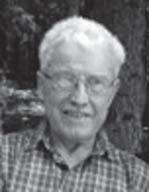

Tominac Petar
March 10, 1940 Stajnica, Lika, Croatia March 20, 2019 Calgary, Alberta
Peacefully with his family by his side, Petar Tominac passed from this life at Foothills Medical Center on March 20, 2019 after a brief illness. Relatives and friends are invited to Prayers at McINNIS & HOLLOWAY Chapel, 2720 Centre St. North Calgary on Friday March 29, at 7pm Funeral Mass will be celebrated at Catholic Church Majka Bozja Bistricka 14675 Deer Ridge Dr. SE Calgary on Saturday March 30, at 11am Graveside Service to follow at Queens Park Mausoleum Reception to follow at Croatian Cultural Centre 3010, 12 St NE Calgary Condolences may be forwarded through www.mcinnisandholloway.com

BURECHAILO, Zenon (Zen), born March 29, 1935 in Wakaw SK, departed this life on December 20, 2018 at the age of 83. Survived by his loving wife Evelyn and children: Gudrun Pattison; Don (Debbie) Pattison; Elsie (Frank) Kendall, Gerald Pattison; Ken Pattison & Kristine Gronning, sister: Clara (Ken) Bachman, grandchildren: Vince, Tara, Dean, Jennifer, Clint, Ginger, Candice, Nicole, Damon, Dawson, Dana & Daphne. Predeceased by parents Mary and William (Bill) Burechailo, brothers Ron and Dave, Burechailo, son Roy Pattison and niece Michelle. Memorial Service to be held on Saturday March 30th, 2:00pm at the Evangelical Free Church of Prince George (5th and Foothills) Pastor Dan Carlaw officiating. Refreshments after the service.

Richard Edward Steinke Nov 7, 1934 Jawor Poland, March 20, 2019 Prince George BC.
Predeceased by his wife Gertrude “Gertie” Mary Steinke, his son Richard Teofil Steinke. Survived by his son Robert Martin Steinke, daughter Lorna Lynn Steinke (Andy), stepson Bill McGillvary (Bernadette), step daughter Lorraine Auger (Joe), and many grandchildren. Richard came to Canada on Aug 8, 1957, from there he attended school for a year and learned English, being top of his class. He worked on farms, oil rigs, and many other jobs before starting at Rustad Bros in the 1970’s. He was head saw filer/millright for over 20 years, until he retired at the age of 62. Dad loved the Toronto Maple Leafs since the first hockey game he watched of them. He will be remembered as the most caring, generous man, his quick wit and sparkling eyes, sitting in his favorite lazy boy chair. I was truly blessed to have him as my father, and I will miss you terribly. You were truly one in a million. I feel better knowing you are back in Mom’s loving arms. No funeral by request. Cremation to take place on Friday at Fraserview Crematorium. Love you Dad from your “Princess Lorna”, and your family and friends
BUSINESS OPPORTUNITY
Established Franchise Photography Business Serving Northern B.C for over 35 years
Gross Revenues of $150.000 plus annually from seasonal work Lots of opportunity to expand the business.
Transition support available to the right buyer
Serious Enquiries Only Office 250-596-9199 Cell 250-981-1472
BUSINESS OPPORTUNITY
Established Franchise Tax Preparation BusinessMackenzieservicing and McLeod Lake area for over 30 years.
Gross Revenues of $85,000 to $90,000
Annually and Potential to expand revenues in a growing economy.
Transition support available for the right buyer. Serious Inquires Only Office (250)997-9003 Home (250)997-5538 Cell (250)990-0152
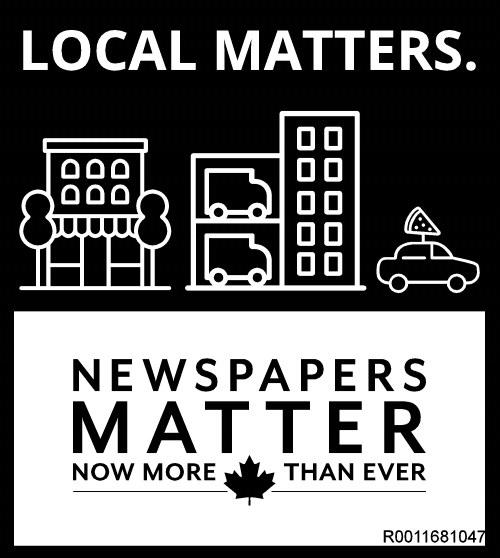
•
Adult & Youth Newspaper Carriers Needed in the Following areas:
• Hart Area
• Driftwood Rd, Dawson Rd, Seton Cres,
• Austin Rd.
• Lakewood
• Pilot, Limestone, Mica, Nelson, Selwyn, Valley, Urquhart, Quartz, Azure, Elkhorn Pl & Cres, Ochakwin, Bowren, Chingee Ave, Dome Ave, Cascade Ave, Delta Pl, Jackpine, Quentin Ave.
•
• Lower College Heights
• O’Grady Rd and Park, Brock, Selkirk, Oxford, Simon Fraser,Trent, Fairmont, Guelph, Gladstone,Hartford, Harvard, Imperial, Kingsley, Jean De Brebeuf Cres, Loyola, Latrobe, LeicesterPl, Princeton Cres, Prince Edward Cres, Newcastle, Melbourne, Loedel, Marine Pl, Hough Pl, Guerrier Pl, Sarah Pl, Lancaster, Lemoyne,
•
• Upper College Heights
• St Barbara, St Bernadette, Southridge, St Anne Ave, Bernard, St Clare St, St Gerald Pl, Creekside, Stillwater.
• • KGV Area
• Wainwright St, Burden St, Irwin, Harper, 1st, 2nd, Douglas, Hammond,Nechako Dr, Carney, Douglas, Melville, Tofield, Alward, Ewert St, Freeman St, Gillett St, Laurier Cres
• • Central
• Pineview
• Domano
Full Time and Temporary Routes Available. Contact for Details 250-562-3301 or rss@pgcitizen.ca


hireaSuperintendentinthePrinceGeorgearea.You areaSuperintendentwithover3yearsoffield operationsexperienceinaleadershipcapacity workingonmulti-disciplinarycommercial constructionprojects.Responsibilitieswillinclude safetyonsiteandensuringcomplianceofallLedcor andWorksafeBCregulations;ensuringthatthe projectsarebuiltaccordingtoplans,specifications, shopdrawings,buildingcodesandthatquality standardsaremaintained;developing,maintaining, anddrivingtheconstructionscheduleinconjunction withtheprojectteam;supervisingfieldemployees, ensuringtheirworkisplanned,performedefficiently, anddocumentsarecompletedaccurately. Interestedapplicantsarerequestedtoforward resumestoheather.taron@ledcor.com,nophone calls,please.Wethankallapplicantsinadvance,only thoseshortlistedwillbecontacted. www.ledcor.com















































